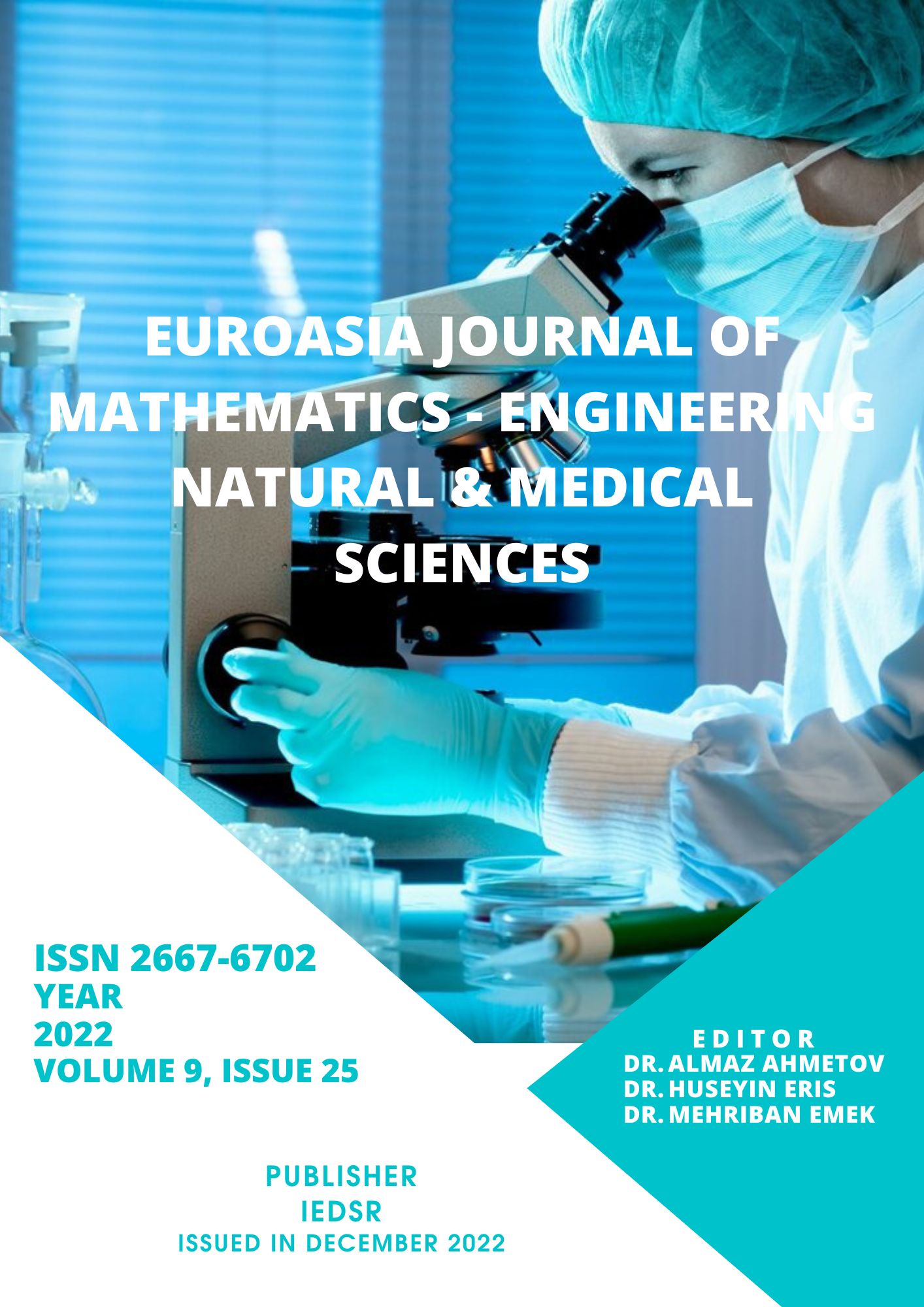Determination of Gluten Degradation Abilities of Lactic Acid Bacteria
DOI:
https://doi.org/10.5281/zenodo.7474692Keywords:
Lactic acid bacteria, Probiotics, Celiac, Gluten sensitivity, Gluten hydrolysisAbstract
Wheat gluten can trigger reactions such as Celiac disease (CD), wheat allergy (BA) and non-celiac gluten sensitivity (DOGD). Sensitive individuals must adhere to a lifelong gluten-free diet. Alternative strategies are needed to reduce gluten in products to levels suitable for sensitive individuals. The hydrolysis of immunoreactive components of wheat gluten into harmless peptides using the sourdough microbiota has received increasing attention. Therefore, in this study, lactic acid bacteria (LAB) were isolated from traditionally produced and untreated flours and sourdoughs derived from them and sourdough samples from local bakeries. Gluten hydrolysis abilities of LAB were tested by qualitative method. As a result, it was determined that 39 LAB strains have the potential to be used as “sourdough” in the leavening of gluten-free or gluten-reduced bakery products.
References
Behera, S.S., Ray, R.C., 2015. Sourdough bread. In: Rosell, C.M., Bajerska,J., El Sheikha, A.F (Eds), Bread Fortification for Nutrition and Health, (pp 53–67). Boca Raton: CRC Press.
Berger, M., Sarantopoulos, C., Ongchangco, D., Sry, J., ve Cesario, T., 2015. Rapid isolation of gluten-digesting bacteria from human stool and saliva by using gliadin-containing plates. Exp Biol Med. 240(7), 917–924.
Bromilow, S.N.L., Gethings L.A., Langridge, J.I., Shewry, P.R., Buckley, M., Bromley, M.J., Mills, E.N.C., 2017. Comprehensive proteomic profiling of wheat gluten using a combination of data-independent and datadependent acquisition. Front Plant Sci. 7, 2020. https://doi.org/10.3389/fpls.2016.02020
Catassi, C., Elli, L., Bonaz, B., Bouma, G., Carroccio, A., Cas¬tillejo, G., Cellier, C., Cristofori, F., de Magistris, L., Dolinsek, J., Dieterich, W., Francavilla, R., Hadjivassiliou, M., Holtmeier, W., Körner, U., Leffler, D.A., Lundin, K.E.A., Mazzarella, G., Mulder, C.J., Fasano, A., 2015. Diagnosis of non-celiac gluten sensitivity (NCGS): the Salerno experts’ criteria. Nutrients, 7(6), 4966–4977. https://doi.org/10.3390/nu7064966
Codex Standard 118-1979, 2015. Codex standard for foods for special dietary use for persons intolerant to gluten. Codex Alimentarius Commission, revision 1, amendment 2.
Corsetti, A., Settanni, L., 2007. Lactobacilli in sourdough fermentation. Food Res Int. 40(5), 539–558.
Çifci, M.M., 2017. Ekşi hamur mayasından izole edilen Lactobacillus türlerinin klasik ve moleküler yöntemlerle tanımlanması, Yüksek Lisans Tezi, Necmettin Erbakan Üniversitesi Fen Bilimleri Enstitüsü, 34–69.
Di Cagno, R., Rizzello, C.G., De Angelis, M., Cassone, A., Giuliani, G., Benedusi, A., Limitone, A., Surico, R.F., Gobbetti, M., 2008. Use of selected sourdough strains of Lactobacillus for removing gluten and enhancing the nutritional properties of gluten-free bread. J Food Prot. 71(7), 1491. 10.4315/0362-028x-71.7.1491
Elçioğlu, Ö., 2010. Kargı Tulum Peynir’inden izole edilen laktik asit bakterilerinin starter ve probiyotik kültür özelliklerinin belirlenmesi. Eskişehir Osmangazi Üniversitesi Fen Bilimleri Enstitüsü, Yüksek Lisans Tezi, Eskişehir.
Gerez, C.L., Rollan, G.C., De Valdez, G.F., 2006. Gluten breakdown by lactobacilli and pediococci strains isolated from sourdough. Lett Appl Microbiol. 42(5), 459–464.
İnce, C., Köse, E., Çağındı, Ö., 2021. In vitro bioaccessibility and health effects of bioactive compounds in bread produced by sourdough fermentation. Türk Tarım – Gıda Bilim Teknol Derg. 9(9), 1686–1694.
Jain, A., Jain, R., Jain, S., 2020. Basic Techniques in Biochemistry, Microbiology and Molecular Biology. Springer, Humana New York, NY.
Kızılaslan, H., 2004. Dünya’da ve Türkiye’de buğday üretimi ve uygulanan politikaların karşılaştırılması. GOÜ. Ziraat Fakültesi Dergisi. 21(2), 23–38.
Kunduhoglu, B., Hacioglu S., 2020. Probiotic potential and gluten hydrolysis activity of Lactobacillus brevis KT16-2. Probiotics Antimicrob Proteins. 12(1), 1–4. 10.1007/s12602- 020-09633-y
Lau, S.W., Chong, A.Q., Chin, N.L., Talib, R.A., Basha, R.K., 2021. Sourdough microbiome comparison and benefits. Microorganisms. 9, 1355. https://doi.org/10.3390/microorganisms9071355
Lionetti, E., Pulvirenti, A., Vallorani, M., Catassi, G., Verma, A.K., Gatti, S., Catassi, C., 2017. Re-challenge studies in non-celiac gluten sensitivity: a systematic review and meta-analysis. Front Physiol., 8, art no. 621. https://doi.org/10.3389/fphys.2017.00621
Liu, M., Bayjanov, J.R., Renckens, B., Nauta, A., Siezen, R.J., 2010.The proteolytic system of lactic acid bacteria revisited: a genomic comparison. BMC Genom. 11, 36. 10.1186/1471-2164-11-36
Newberry, C., 2019. The gluten-free diet: use in digestive disease management. Curr Treat Options Gastroenterol. 17, 554–563. https://doi.org/10.1007/s11938-019-00255-0
Obsborn, T., 1924. The vegetable proteins, 2nd edn. Longmans Green & Co, London.
Plugis, N.M., Khosla, C., 2015. Therapeutic approaches for celiac disease. Best Pract Res Clin Gastroenterol. 29, 503–521.
Rashmi B.S., Gayathri D., 2017. Molecular characterization of gluten hydrolysing Bacillus sp. and their efficacy and biotherapeutic potential as probiotics using Caco-2 cell line. J Appl Microbiol. 123, 759–772. 10.1111/jam.13517
Reiner, K., 2010. Catalase test protocol. American Society for Microbiology Microbe Library. https://asm.org/getattachment/72a871fc-ba92-4128-a194-6f1bab5c3ab7/Catalase-Test-Protocol.pdf
Scherf, K.A., Koehler, P., Wieser, H., 2016. Gluten and wheat sensitivities - an overview. J Cereal Sci. 67, 2–11. https://doi.org/10.1016/j.jcs.2015.07.008
Scherf, K.A.,Wieser, H., Koehler, P., 2018. Novel approaches for enzymatic gluten degradation to create high-quality gluten-free products. Food Res Int. 110, 62–72. https://doi.org/10.1016/j.foodres.2016.11.021
Selma G., Zorba, N.N.D., 2021. Genel Mikrobiyoloji ve Laboratuvar Kılavuzu. 12. Baskı, sh: 204. Nobel Akademik Yayıncılık, Ankara.
Sharma, K., Bhawanani, S., Sharma, D., Goel, G., 2022. Selection of indigenous Lacticaseibacillus paracasei CD4 for production of gluten-free traditional fermented product Bhaturu. Food Biotechnol. 36(1), 76–91. 10.1080/08905436.2021.2007395
Stefańska, I., Piasecka-Jóźwiak, K., Kotyrba, D., Kolenda, M., Stecka, K.M., 2016. Selection of lactic acid bacteria strains for the hydrolysis of allergenic proteins of wheat flour. J Sci Food Agric. 96(11), 3897–3905. https://doi.org/10.1002/jsfa.7588
U.S. FDA (Food and Drug Administration), 2018. Generally Recognized as Safe (GRAS) Notification Program 01.04.2018. https ://www.fda.gov/food/gener ally-recog nized -safe-gras/micro organ ismsmicrobial-deriv ed-ingre dient s-used-food-parti al-list
Vermeulen, N., Pavlovic, M., Ehrmann, M.A., Gänzle, M.G., Vogel, R.F., 2005. Functional characterization of the proteolytic system of Lactobacillus sanfranciscensis DSM20451 during growth in sourdough. Appl Enviro Microbiol. 71(10), 6260–6266. 10.1128/aem.71.10.6260-6266.2005
Vogel, R.F., Pavlovic, M., Eehrmann, M.A., Wiezer, A., Liesegang, H., Offschanka, S., Voget, S., Angelov, A., Böcker, G., Liebl, W., 2011. Genomic analysis reveals Lactobacillus sanfranciscensis as a stable element in traditional sourdoughs. Microb Cell Fact. 10(Suppl. 1), S6. 10.1186/1475-2859-10-S1-S6
Wehrle, K., Crowe, N., van Boeijen I., Arendt, E.K., 1999. Screening methods for the proteolytic breakdown of gluten by lactic acid bacteria and enzyme preparations. Eur Food Res Technol. 209 (6):428–433. doi:10.1007/s002170050521
Downloads
Published
How to Cite
Issue
Section
License
Copyright (c) 2022 Euroasia Journal of Mathematics, Engineering, Natural & Medical Sciences

This work is licensed under a Creative Commons Attribution-NonCommercial 4.0 International License.

